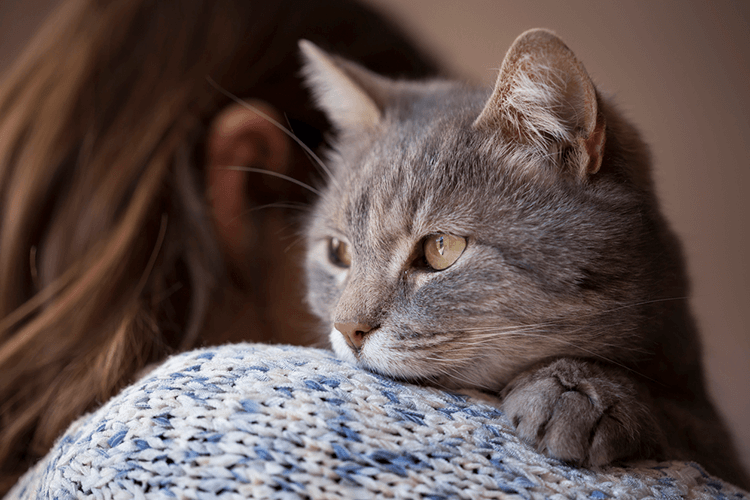Purring. One of life’s furriest and snuggliest feline mysteries. Cat lovers everywhere know what purring is, and there’s little more relaxing than cuddling a cat and feeling that rumble start up. Yet none of us know exactly how purring happens – I mean, besides knowing that happy cat generally equals purring – or even what purring is meant to accomplish!
WHAT IS PURRING? HOW DO CATS DO IT?
So, purring is that tonal vibrational thing that cats do and – look, you just know it when you hear it. Or feel it. I’m willing to bet all of you reading this have held or petted a purring cat before. The loudness of the purr varies – I’ve encountered cats who you have to be holding to realize they’re purring, while my calico kitten Rey can be heard clear across the room. (That’s not hyperbole, by the way! When we first brought her home, she loved hiding under and inside stuff; she would also start purring any time we walked into the room. Many times we sussed out her hiding spots just by following the sound of her purring!) Getting technical, though, we think that cats reflexively use neural oscillation to rapidly open and constrict the opening between their vocal cords as they inhale and exhale. So, basically, purrs are little tiny air farts of contentment.
Except when they’re not, of course! Cats purr when they’re happy and relaxed, and sometimes when they just want something (like dinner!). There’s also a lot of purring between a mama cat and her kittens. And then cats will purr when they’re injured or in pain – but why?
DOES PURRING HAVE HEALING PROPERTIES?
In 2001, The Journal of the Acoustical Society of America published a paper by Elizabeth von Muggenthaler on her studies of purring in a variety of cats (including domestic cats, pumas, ocelots, and cheetahs). She measured the frequencies of their purring and observed that they measured between 25 and 150 Hz. These purr frequencies correspond to vibrational frequencies used in the treatment of conditions such as bone fractures, muscle strain, breathing difficulty, joint flexibility, and pain. Domestic cats in particular (along with servals, ocelots, and pumas) produced strong frequencies at precisely 25 and 50 Hz, which von Muggenthaler asserted are the low frequencies that best encourage bone fracture healing. Her conclusions were that an internal healing process such as purring would be useful to felines, keeping their muscles and bones strong during healing – and also shortening recovery time. That’s important when you rely on hunting for your next meal, so it makes sense it’d be a keeper in the evolution of cats!
THAT’S AWESOME! DOES PURRING HELP PEOPLE, TOO?
It is awesome, and… maybe? Snuggling a purring cat is definitely a positive and soothing experience, which can lower your stress and help relax you. Lowering your stress can lead to better health overall, for example by naturally lowering your blood pressure. And, hey, if you’re regularly spending time with a purring cat while you have a broken bone or sore muscles, the frequency of that purr may indeed encourage your body in its healing process. I can say from firsthand experience that purring cat cuddles can definitely even out your breathing and help you recover from, say, an anxiety attack. The benefits of cat companionship don’t stop there, either! We’ve explored the health benefits of pet ownership before.
So, the next time you pull a muscle or break a phone, head to the doctor first – and then make it a point to get plenty of purr time in with your favorite feline once you’re home! Not only will it just help you feel better, but it might help you heal faster, too.






